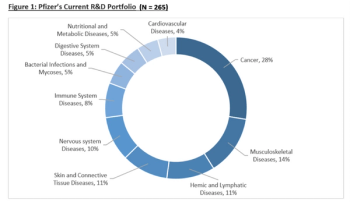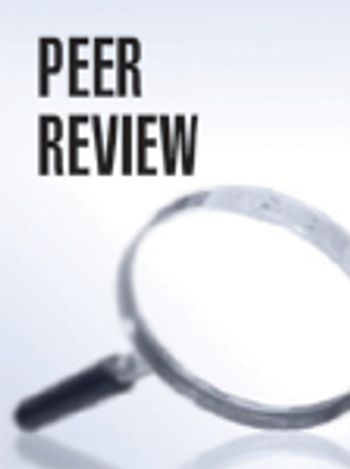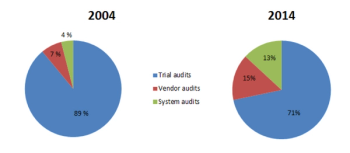
The sponsors will use CRF Health's TrialMax® platform to support data capture for quality of life issues during the post-progression phase.

The sponsors will use CRF Health's TrialMax® platform to support data capture for quality of life issues during the post-progression phase.


The December Forum included discussions of global disclosure performance, and highlighted the importance of measuring disclosure performance.





The solution identifies unknown relationships in data, whereby customers can perform dimension-free exploratory analysis on data such as adverse events, labs, concomitant medications, medical history and vital signs.

Bracket SMS allows for reminders to be sent direct to patient mobile phones when they've opted in to the service.

This article evaluates the impact of Allergan’s acquisition on Pfizer’s R&D Portfolio and the long term impact the acquisition will have on Pfizer’s revenue and earnings.

This overview of clinical supply blinding methods addresses questions about this topic in the context of the current research environment. The recommendations for protecting the blind come at an important time for the industry and may help fill a gap left by the lack of training resources and published material about this subject.

The information in this article serves as a good start by providing factors to keep in mind if your organization is considering adopting ePRO. Appropriateness of ePRO often varies by study and is evaluated individually. As the research landscape continues to shift, being prepared will help ensure a successful IRB review of your study and facilitate a smoother research process overall.

According to Target Health, this is the first product to be approved using for in its pivotal trial, direct data entry of patient data at the time of the clinic visit into an EDC system, with no need for paper records.

Executive moves abound in the CRO world this month; plus a list of the 2015 RAPS Fellows.

Patient involvement, transparency, and support for innovative medicines are among the key objectives of the European Medicines Agency (EMA) over the next five years, according to Executive Director Prof. Guido Rasi.


Potential assets that could benefit from this new offering include small molecule drugs, biologics, medical devices, combination therapies and novel technologies.

Scientists plan to use the funds to repurpose Artesunate, an antimalarial drug discovered by Nobel Prize Laureate (2015) in a clinical trial aimed at cutting the rate of metastases in colorectal cancer.

ICON is using Activate for all global studies, which span more than 50 countries.


Nextrials CEO James Rogers believes with renewed focus on eSource driven by the FDA and industry standards groups like CDISC, sponsor companies and sites will take advantage of EHR systems to streamline clinical research.



Quotient Clinical is based in Nottingham, U.K., where formulation development, real-time Good Manufacturing Practice services, and early clinical trials are performed at the same facility.

The acquisition provides ICON with access to PMG Research’s network of 48 physician practices and large multi-specialty healthcare institutions throughout North Carolina, South Carolina, Tennessee and Illinois.

Bio-Optronics will participate as a Global Impact Partner (GIP).

Results from an analysis of oncology trials suggest that many patients who are excluded from participation in clinical trials due to an elevated ECG machine-generated QTc measurement may actually have been eligible for study participation.


A follow-up survey on clinical quality assurance (CQA) assesses current industry best practices compared to a decade ago, and provides recommendations on this key component of quality management for the future.